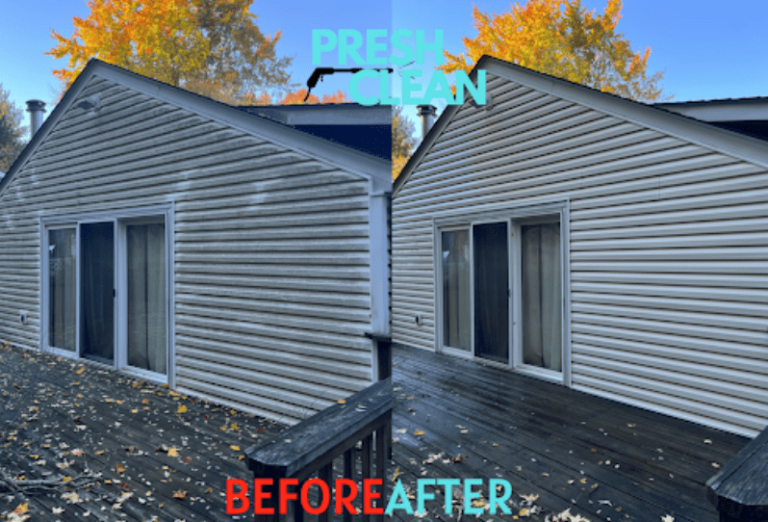How to Ensure a Healthy Lawn: Tips and Tricks for a Lush Green Yard
Introduction to Lawn Maintenance
A green, thriving lawn is often the pride of a homeowner. It’s about aesthetics and creating a space where your family can enjoy the outdoors. Regular lawn care and maintenance can make all the difference in achieving that lush yard.
The success of your lawn largely depends on the consistency and quality of care you provide. From proper mowing techniques to seasonal fertilization, each step plays a pivotal role in maintaining the vibrant green expanse. In this guide, we’ll explore tips and tricks to help you keep your lawn in top shape year-round.
The Benefits of Natural Lawn Care
One effective method to achieve a beautiful lawn is hydro seeding, which involves spraying a mixture of seed, mulch, and water onto the ground. This technique ensures even grass growth and can cover large areas quickly. Additionally, hydroseeding can be more cost-effective than traditional sodding, making it an attractive option for those looking to establish a new lawn efficiently. Natural lawn care methods, such as organic fertilizers and compost, can help maintain a healthy lawn without harming the environment. These methods reduce chemical runoff and improve soil health over time. Organic fertilizers release nutrients gradually, providing a steady supply of essential minerals to your grass. Compost, rich in organic matter, enhances soil structure and fertility, promoting vigorous root growth.
Organizations like the EPA provide helpful guidelines on efficient and sustainable landscaping practices. These practices include mulching grass clippings, which return valuable nutrients to the soil and reduce the need for synthetic fertilizers. Moreover, using native plants and grasses adapted to your local conditions can reduce the need for additional water and chemical interventions. By adopting natural lawn care methods, you contribute to a healthier ecosystem and enjoy a thriving, resilient lawn.
Watering Techniques and Timing
Watering your lawn correctly is one of the most critical factors in ensuring its health. Overwatering can lead to fungal diseases, while underwatering can cause the grass to dry and die. It’s best to water early in the morning to reduce evaporation and give the grassroots enough time to absorb moisture. This practice ensures the water reaches deeper into the soil, promoting more robust root systems and healthier grass.
According to Scientific American, eco-friendly watering techniques conserve water and contribute to a healthier lawn. Drip irrigation systems, rain barrels, and other water-saving methods can significantly reduce your lawn’s water usage. This is beneficial for the environment and helps lower water bills. To ensure optimal water distribution, consider gradually dividing your lawn into zones and watering each section. This approach prevents water runoff and ensures that each part of the lawn receives adequate moisture.
Choosing the Right Grass Type
The type of grass you plant should be suited to your climate and soil conditions. For instance, Bermuda grass thrives in warm climates, while fescue is better for cooler regions. Consulting with local experts or conducting a soil test can help you make an informed choice. Knowing your soil’s pH levels, nutrient composition, and drainage properties allows you to select a grass variety that will grow well in your specific conditions.
Choosing the right grass type isn’t just about climate suitability; it’s also about the intended use of your lawn. If your lawn will experience heavy foot traffic from children and pets, opt for a durable variety like Kentucky bluegrass or perennial ryegrass. On the other hand, if low maintenance is your priority, consider zoysia grass, which requires less frequent mowing and watering. Balancing these factors will help you achieve a lawn that looks good and meets your practical needs.
Aeration and Overseeding: Breathing New Life Into Your Lawn
Lawn aeration and overseeding are essential for maintaining the health of your lawn. Aeration involves creating small holes in the soil to allow air, water, and nutrients to reach the roots.This process alleviates soil compaction, making it easier for roots to grow deeper and more robust. Overseeding, on the other hand, involves planting grass seed directly into existing turf to increase the thickness of your lawn. This helps fill in bare spots and rejuvenates tired, thinning lawns.
Regular aeration and overseeding can transform a patchy lawn into a dense, green carpet. Aim to aerate at least once a year, preferably in the fall when grass can recover quickly. Follow this up with overseeding to introduce new grass varieties more resistant to diseases and pests. This combination improves the lawn’s overall health and enhances its appearance, making it more resilient to environmental stressors.
Preventing and Treating Common Lawn Diseases
Lawn diseases can severely affect the health of your grass. Conditions like brown patches, dollar spots, and rust are common issues that can be managed by maintaining proper lawn care practices. Good irrigation management and disease-resistant grass varieties can go a long way in preventing diseases. Ensuring your lawn is well-aerated and dethatched can reduce the risk of fungal infections.
Maintaining a balanced nutrient supply through proper fertilization can strengthen grass, making it less susceptible to diseases. A proactive approach to lawn care will help you keep your lawn healthy and disease-free.
Seasonal Lawn Care Tips
Different seasons call for other lawn care approaches. For example, spring is the time for fertilizing and controlling weeds, while autumn is ideal for aeration and overseeding. Tailoring your lawn care routine according to the season can yield better results year-round. Focus on dethatching and removing winter debris in spring to give your grass a fresh start. Apply a slow-release fertilizer to encourage healthy growth and address any weed problems early.
Want to learn more? Visit our website for more like this.







